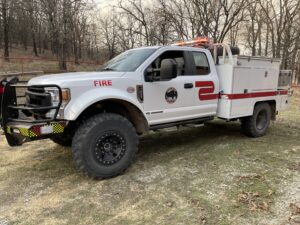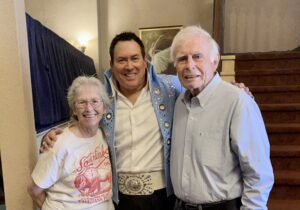A few days ago I received a telephone call in the early morning from my neighbor who owns the ranch immediately east of our property, “Jim, can we cross your place with some fire-fighting trucks and volunteers? Our controlled burn is not controlled. It may jump over on you.”
“Sure, anything I can help with?” Of course, as a judge neither I nor anyone else ever expects me to do anything except watch and listen, but I thought I should offer.
“Just keep an eye on things; it should be okay if the wind doesn’t pick up or if it changes from westerly to eastward. My cowboys and I will be coming through soon.”
Controlled burning in the early spring and fall when the land is more moist and seeds are not yet being heavily produced has been a proven technique for range management for many years. There is evidence Native Americans used deliberate burning in parts of America many years before Europeans arrived. According to a 2016 article from the National Park Service the tallgrass prairies would quickly succumb to undesirable shrubs and trees, such as red cedars, without periodic burning.



There are some negatives such as possible erosion and excessive smoke from pasture fires, but most experts posit the overall benefits lie with burning. As for Peg and me, our concerns were more with our log cabin and log out-buildings. I stationed myself at the fence line between the neighbor’s ranch and our place and marveled at the hard, dangerous work done by mainly volunteer fire departments from Barnsdall, Hominy and rural fire departments from other areas of Osage County, Oklahoma. I apologize for not thanking each firefighter and company by name, but there were so many volunteers and water trucks and there was so much expert and complex planning going on I do not know whom to thank. Therefore, thanks to all who responded and managed the raging backfires that preserved all of our structures and helped clear out the thatch and undergrowth from a good portion of our trees and pastures.
It was gratifying to experience the thoughtfulness and expertise of the firefighters who were the opposite of the fire company of the town of Dawson’s Landing in Mark Twain’s wonderful book, Pudd’nhead Wilson:
“A village fire company does not get much chance to show off, and so when it does get a chance, it makes the most of it. Such citizens of that village (Dawson’s Landing) as were of a thoughtful and judicious temperament did not insure against fire, they insured against the fire company.”
It was interesting to see firefighters helping to safeguard our home who understood the elements of fire and wind and how to turn them from a possible dangerous disaster into benefits.
The new growth is already striving to turn the still smoldering old vegetation into wildflowers and new Bluestem grasses. I wondered how the ubiquitous and unfeeling conflagration would impact the deer and other animals that inhabit our fields and make them so much more enjoyable. But just today I observed a coyote gingerly dancing across the ashes as he reoriented himself to his new environment. He looked just as any human might look in the aftermath of some catastrophe, a little confused but hopeful Mother Nature knew what she was doing.
Peg and I will take our guidance from Wily and look upon the huge fire as what Peg might call another one of “Jim’s Adventures”. We are eagerly awaiting the emergence of the Indian Blanket and Indian Paintbrush wildflowers that, thanks to the uninvited wildfire, will soon be gracing our prairie home.













